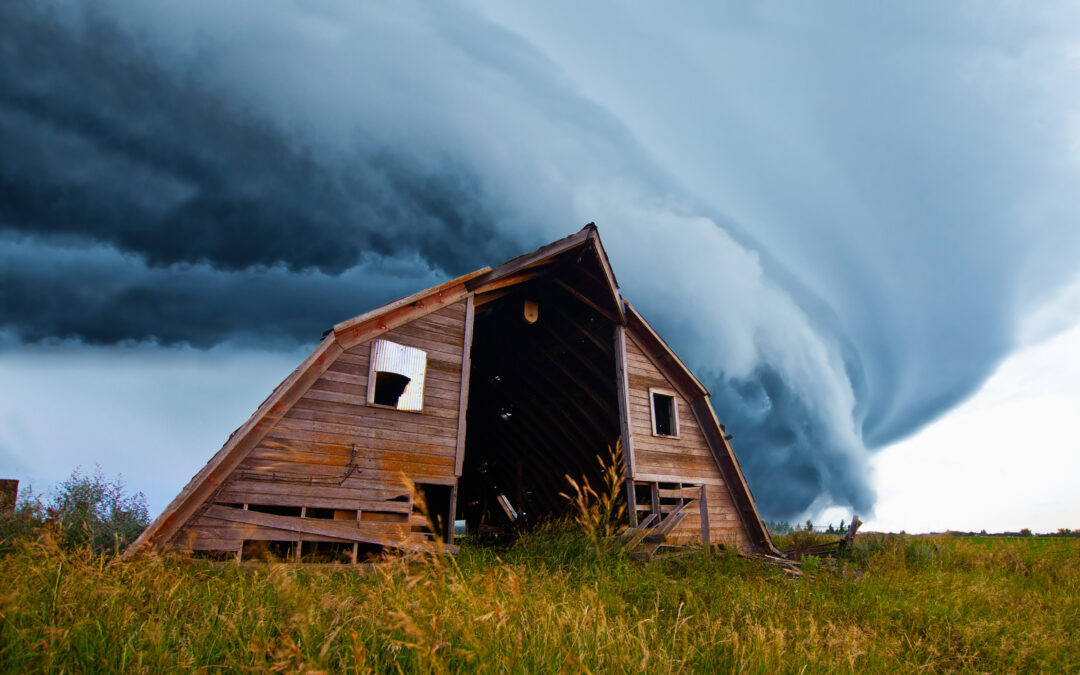Re-evaluating, Rebuilding, and Rebuilding to Last
Weather-related disasters, whether hurricanes, floods, wildfires, or tornadoes, can wreak havoc on homes, communities, and infrastructure, leaving devastation in their wake. However, in the aftermath of such events, there is an opportunity not only to recover but also to re-evaluate, rebuild, and fortify against future threats. In this blog, we’ll explore the steps to recovery from a weather-related disaster, including re-evaluating build, location, design, preventable aspects, and rebuilding to last.
Assessing the Damage and Re-evaluating:
Evaluate Build and Location
- Assess Structural Integrity: Determine the extent of damage to buildings and infrastructure, including any structural weaknesses or vulnerabilities that contributed to the disaster’s impact.
- Review Location Vulnerability: Consider the susceptibility of the area to future weather-related events, such as flooding zones, hurricane-prone regions, or wildfire risk areas, and assess the feasibility of rebuilding in the same location. It may include a slight relocation away from general prevailing winds, other structures or trees and/or building up the base/foundation.
Re-evaluate Design and Preventable Aspects
- Identify Design Flaws: Analyze any design flaws or deficiencies that may have exacerbated the impact of the disaster, such as inadequate drainage systems, insufficient storm-resistant materials, or even improper building orientation.
- Address Preventable Aspects: Take steps to mitigate preventable aspects that contributed to the disaster, such as poor land use planning, inadequate building codes or enforcement, or lack of emergency preparedness measures.
Rebuilding to Last:
Build Resilient Infrastructure
- Incorporate Resilient Design: Integrate resilient design principles into the rebuilding process, including reinforced construction materials, storm-resistant building techniques, and elevated structures to mitigate flood risk.
- Implement Sustainable Practices: Embrace sustainable building practices that minimize environmental impact and enhance resilience, such as green building materials, energy-efficient systems, and natural disaster-resistant landscaping.
Strengthen Community Resilience
- Foster Community Collaboration: Encourage community engagement and collaboration in the rebuilding process, including input from residents, stakeholders, and local authorities to ensure a comprehensive and inclusive approach to recovery.
- Invest in Infrastructure: Allocate resources to invest in critical infrastructure improvements, such as robust stormwater management systems, flood protection measures, and emergency response capabilities, to enhance community resilience and preparedness.
Learn from the Experience
- Educate and Inform: Share lessons learned from the disaster recovery process with the broader community to raise awareness, promote disaster preparedness, and empower individuals to take proactive measures to mitigate future risks.
- Learn from the experiences of other communities: Reach out to other cities, towns, neighborhoods to seek out lessons from their experiences. The wheel does not have to be re-invented each time.
- Adapt and Innovate: Embrace innovation and adaptive strategies to address evolving weather-related threats, such as climate change adaptation measures, advanced forecasting technologies, and resilient urban planning practices.
Recovering from a weather-related disaster is a challenging and multifaceted process that requires careful planning, collaboration, and resilience. By re-evaluating build, location, design, preventable aspects, and rebuilding to last, communities can emerge stronger and more resilient in the face of future threats. Through a combination of resilient infrastructure, sustainable practices, community engagement, and continuous learning, we can build a more resilient future that withstands the challenges of an uncertain climate.
LEARNING FROM THE PAST
In the aftermath of weather-related disasters, communities are faced with the daunting task of rebuilding and recovering. However, amidst the challenges and hardships, there are valuable lessons to be learned from the experiences of other communities who have navigated similar journeys. In this blog, we’ll explore anecdotes from communities that have rebuilt after disaster, highlighting the lessons they’ve learned and the strategies they’ve employed to strengthen resilience and fortify against future threats.
Lessons from Hurricane Katrina
In the wake of Hurricane Katrina’s devastation in 2005, the city of New Orleans faced unprecedented challenges in rebuilding its infrastructure and communities. However, one of the most enduring lessons from Katrina was the importance of investing in resilient infrastructure and flood protection measures. The city’s post-disaster rebuilding efforts focused on strengthening levees, improving drainage systems, and implementing stricter building codes to mitigate flood risk and enhance resilience against future storms.
Building Back Stronger After Superstorm Sandy
Following the destruction wrought by Superstorm Sandy in 2012, communities along the East Coast of the United States embarked on a journey of recovery and resilience-building. In the aftermath of Sandy, cities such as New York and New Jersey implemented innovative strategies to fortify against future storms, including elevating homes and critical infrastructure, enhancing coastal defenses, and promoting sustainable development practices. These efforts not only bolstered resilience but also revitalized communities and fostered a sense of unity and determination to build back stronger.
Reimagining Paradise After the California Wildfires
In the wake of devastating wildfires that ravaged communities across California in recent years, residents faced the daunting task of rebuilding their lives amidst the ashes. However, amidst the tragedy, stories emerged of resilience, innovation, and community spirit. In towns such as Paradise, which was nearly wiped off the map by the Camp Fire in 2018, residents banded together to reimagine and rebuild their community with resilience and sustainability at the forefront. From adopting fire-resistant building materials to creating defensible space around homes, Paradise residents embraced new approaches to mitigate wildfire risk and create a safer, more resilient future.
The anecdotes from communities rebuilding after disaster offer valuable insights and inspiration for resilience-building efforts around the world. From investing in resilient infrastructure to embracing innovative solutions and fostering community collaboration, these stories demonstrate the power of resilience in the face of adversity. By learning from the experiences of others and embracing a forward-thinking approach to rebuilding, communities can emerge stronger, safer, and more resilient in the face of future threats. Get in touch to learn more!



